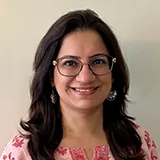This study examined how access to a savings card can influence the saving behaviour of customers, and improve their financial health and resilience.
Background
Ujjivan Small Finance Bank has a large women customer base that uses its services to obtain small ticket loans. However, very few customers use their accounts to deposit savings and thereby are not using Ujjivan as a one-stop bank for a broader set of financial services. Women’s World Banking is working with Ujjivan Small Finance Bank to develop a solution to activate savings account use by their customer base. They have developed a savings card to remind Ujjivan customers to save with the bank. Ujjivan staff distribute savings cards at the time of loan disbursement, which predominantly happens at Ujjivan branches, explain the savings card to the customers, and ask them to identify a reason for keeping savings in their bank account. The treatment group consists of customers who receive both a loan card as well as the newly developed savings card at the time of loan disbursement. The control group consists of customers who only receive the usual loan card at the time of loan disbursement.
Approach
A baseline survey was conducted using phone interviews, due to logisitcal challenges of in-person surveys during COVID-19 situation. Three to six months after the quantitative baseline, in-depth interviews were conducted with Ujjivan staff and customers. 12 months after the baseline, in-person end line data collection was undertaken including both quantitative and qualitative components. Two states, West Bengal (East) and Tamil Nadu (South) were selected for this research study. These are states where Ujjivan has a large presence. The total sample size for the quantitative survey was 20000, consisting of female clients with active loans. The sample drew 8 branches from Tamil Nadu and 8 branches West Bengal. Metropolitan, urban, semi-urban, and rural respondents were sampled. Sample for the qualitative research was anticipated to be 30 loan customers and 10 Ujjivan staff. Interviews were conducted in four branches: 2 branches (1 urban, 1 rural) in each of the two states. Loan customers in the treatment and control groups were interviewed.




